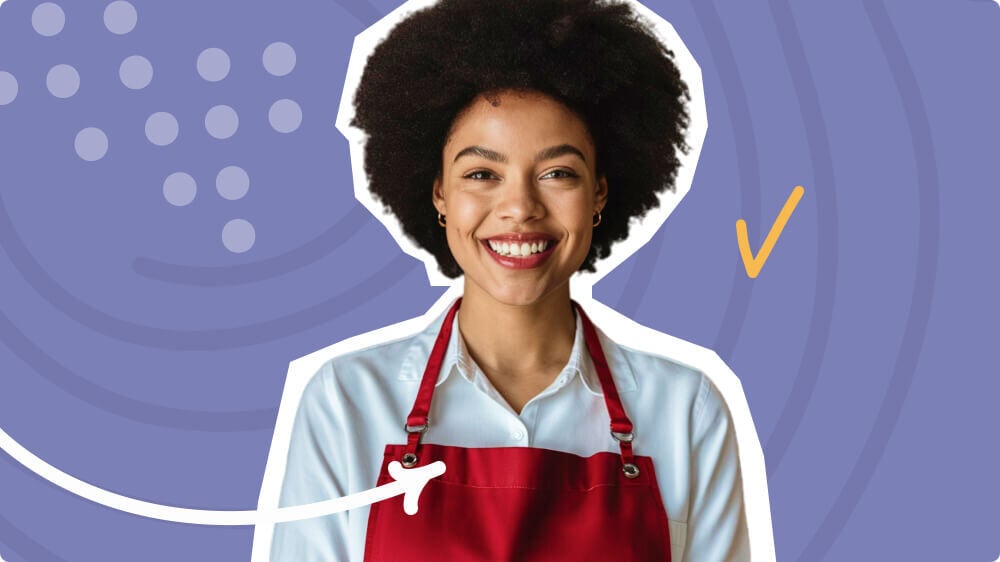Off-premise dining has become increasingly popular in recent years due to ongoing fears related to the COVID-19 pandemic. And, even as social distancing measures become more relaxed, customer data shows the preference for things like drive-thru and delivery is here to stay.
So, if you're a restaurant owner looking to offer your customers more off-premise dining options, you're in luck. We’re going to help you take advantage of this increasingly popular trend by discussing:
- 7 of the most common off-premise dining options
- Tips on how to make them work for your business
- The pros and cons of off-premise vs. on-premise dining
What is off-premise dining?
Off-premise dining refers to any dining experience that happens outside of your restaurant. In other words, your customers purchase food from your restaurant but consume it elsewhere.
Of course, this is nothing new. Off-premise dining has always been popular among restaurant-goers. But the COVID-19 pandemic has forced restaurant owners to put more effort into their off-premise dining services to adjust to the new normal.
How to upgrade your restaurant’s off-premise dining options
Let’s now take a look at seven of the most popular options for off-premise dining and discuss ways you can add or upgrade this service for your restaurant.
Food delivery
In recent years, there has been a surge in the food delivery market thanks to the emergence of third-party delivery services, like GrubHub and UberEats. The COVID-19 pandemic has also made this off-premise dining option more popular due to safety concerns involved with dining out.
If you are currently using third-party delivery services, consider setting up your own in-house delivery system to have more control over the whole delivery process. By doing so, you can save money on delivery service fees that range from 10-30%.
Takeout
Throughout the pandemic, takeout has also increased in popularity among customers. According to The National Restaurant Association’s 2021 State of the Restaurant Industry Report, 53% of adults say purchasing takeout or delivery food is now essential to the way they live.
To upgrade your customers' takeout experience, set up a curbside station that is visible to customers as they arrive at your restaurant. Consider also creating separate sections for in-person ordering and pick up so both can run simultaneously without disruption.
Drive-thru
You used to only find drive-thrus at fast-food restaurants. But this business model has been widely adopted by other fast-casual restaurants due to increased demand during the pandemic. One consumer survey found that, in August 2021, 52% of orders in quick-service restaurants were placed in drive-thrus.
Increasing your service speed is crucial to improving your customers’ drive-thru experience. One way to accomplish this is to let customers pre-order food online through your restaurant’s app. You could also create a drive-thru only menu that only consists of food and drink items that your staff can prepare quickly.
Ghost kitchens
Ghost kitchens are restaurants that operate entirely out of a kitchen and only prepare food for delivery or takeout. The market size of ghost kitchens was estimated at more than $43.1 billion in 2019. And that number is expected to grow to $71.4 billion by 2027!
You can experiment with the ghost kitchen business model by separating a part of your kitchen to only serve and prepare online orders. You can also adapt your current menu into a delivery-friendly version and set up a new brand on a third-party service to reach a different market.
Drive-in restaurant
A drive-in restaurant is a restaurant that has a parking area where customers can order and dine inside their vehicles. Some popular chains in the United States like Sonic and A&W are the pioneers of this type of off-dining experience. And Sonic managed to increase sales by $1 billion in 2020!
To start a drive-in service, begin by creating a specialized menu of foods that are easy to consume in the car. On top of that, make it easy for customers to order through your online website, by phone or on your restaurant app.
Mobile Kitchen
Mobile kitchens come in different forms: food trucks, food trailers or food carts. The main benefits of mobile kitchens are flexibility and mobility. There’s also an opportunity to profit big from this business model. In 2020, the food truck market size was valued at more than $1.2 billion!
To run a mobile kitchen like a food truck, make sure you apply for required permits, such as a mobile food facility permit and a parking permit. These permits are, of course, on top of your restaurant license. Make sure to also do some research about where to best station your mobile kitchen and what type of foods customers prefer from this restaurant model.
Meal kit subscription service
Adding a meal subscription service to your restaurant’s offerings can give customers a new and exciting way to order from your restaurant. And, while it’s true this won’t appeal to all of your customers, the projected market size does show it’s appealing to enough of them. In 2022, the global meal kit service market size is expected to surpass $13 billion.
To test demand for this service, experiment with a variety of subscription offerings. For example, you could offer full meal kits for your restaurant’s signature offerings, including basic ingredients and step-by-step instructions. Similarly, you could sell customers pre-made frozen meals of your most popular menu items.
On-premise vs. off-premise dining pros and cons
Your restaurant may offer customers the option to choose between on-premise and off-premise dining. But if you’re deciding whether to invest more time and resources into one of these dining options to adapt to the ongoing pandemic, it’s important to know the pros and cons of each.
Pros of on-premise dining
- More menu options. At your restaurant, you can offer customers a wider variety of dishes. That’s because, when customers dine in, you don’t have to worry about things like meals getting cold while getting delivered or how well your food containers can contain certain ingredients.
- Upselling opportunities. It’s easier to upsell things like appetizers and drinks when you get to speak directly to your customers. And, as you know, upsells can significantly increase your profit margin on a single check.
- Customer experience. When you can have in-person interaction with customers, you’re also more likely to build customer loyalty that can turn first-time customers into repeat customers.
Cons of on-premise dining
- Operating costs. Having an on-premise dining area means you have to pay for enough space to give customers a comfortable dining experience. This, of course, adds more to your restaurant’s overhead costs.
- Labor costs. Your restaurant needs staff like hosts, servers and cashiers for on-premise dining. This, too, adds to your overall operating expenses.
- Health concerns. Due to the ongoing pandemic, your customers still might not feel comfortable dining in at your restaurant.
Pros of off-premise dining
- Low operational cost. Thanks to automation and outsourcing, off-premise dining options can be inexpensive to run.
- Higher profit. Due to lower operational costs, you can earn a higher return on investment than you would running a traditional brick-and-mortar restaurant.
- Better customer reach. Things like ghost kitchens can help expose your restaurant to new customers that might not have ever visited your restaurant but would like to try out your food.
Cons of off-premise dining
- Menu limitation. Certain meals are best served fresh and not suitable for delivery, resulting in limited menu offerings for off-premise services.
- Lack of control. If you partner with third-party delivery services, you have little to no control over things like customer wait time and the overall quality of the delivery service.
- Difficult to build customer loyalty. Since your customers have very little direct interaction with your restaurant, it’s harder to stand out among competitors and retain long-term customers.
Final thoughts
More and more people are choosing to avoid eating in restaurants due to lingering health concerns related to COVID-19. And, as a restaurant owner, you’ll want to upgrade your restaurant’s off-premise dining options to keep up with the competition. We hope this article has given you some ideas to make it happen!
And if you want more tips like these, be sure to check out the rest of our blog where we discuss topics like the top restaurant interview questions to ask before hiring new employees in 2022!




